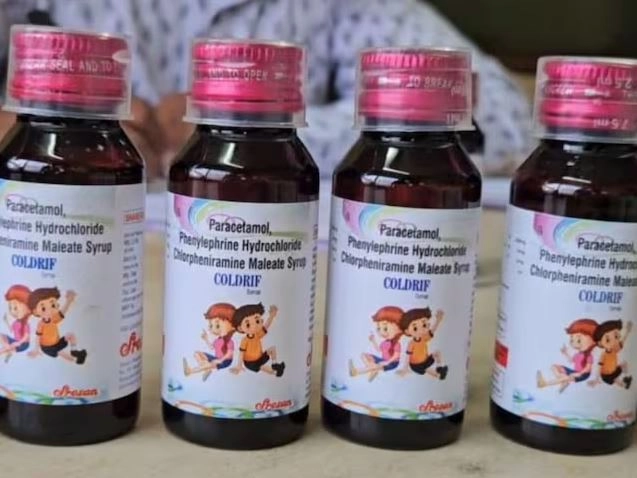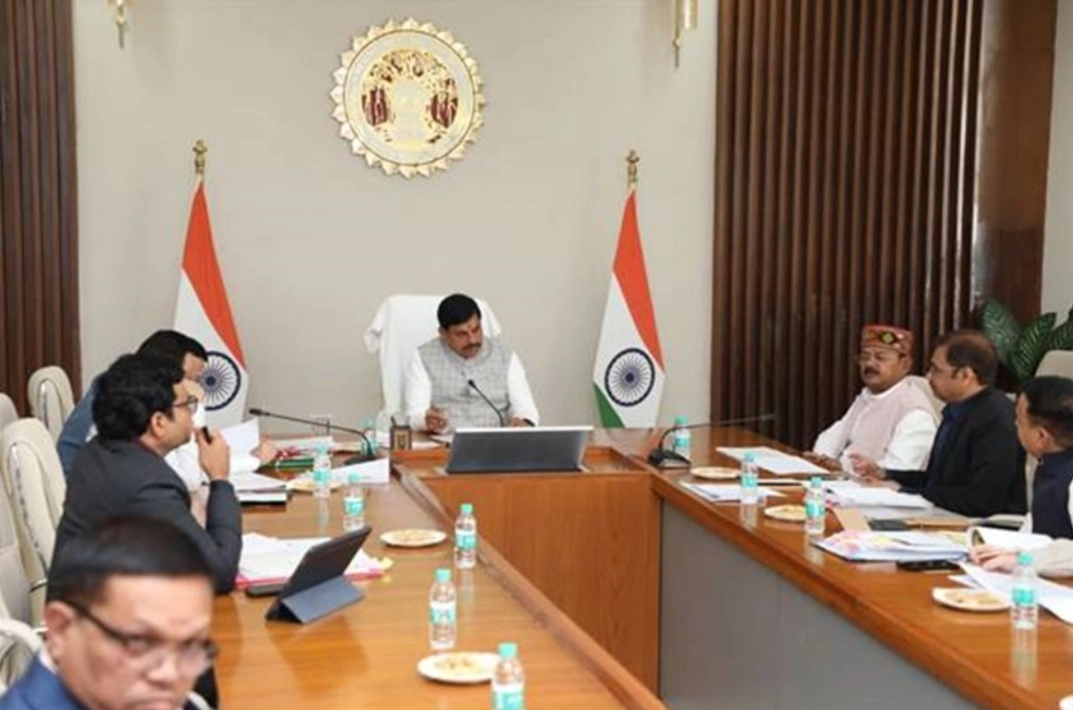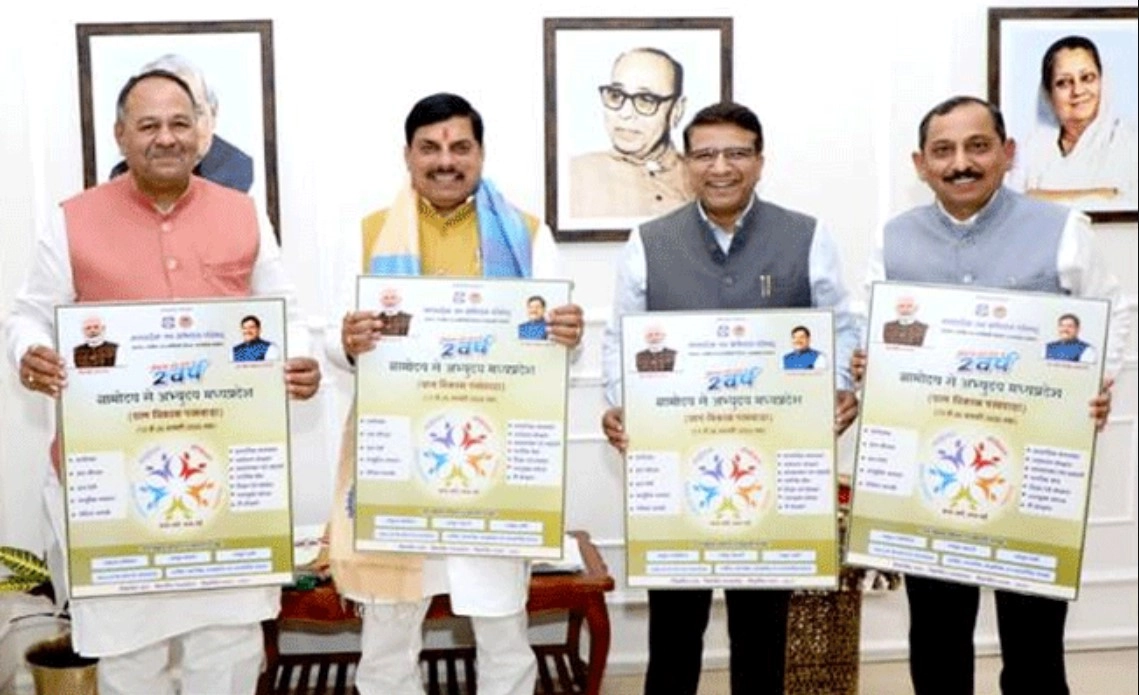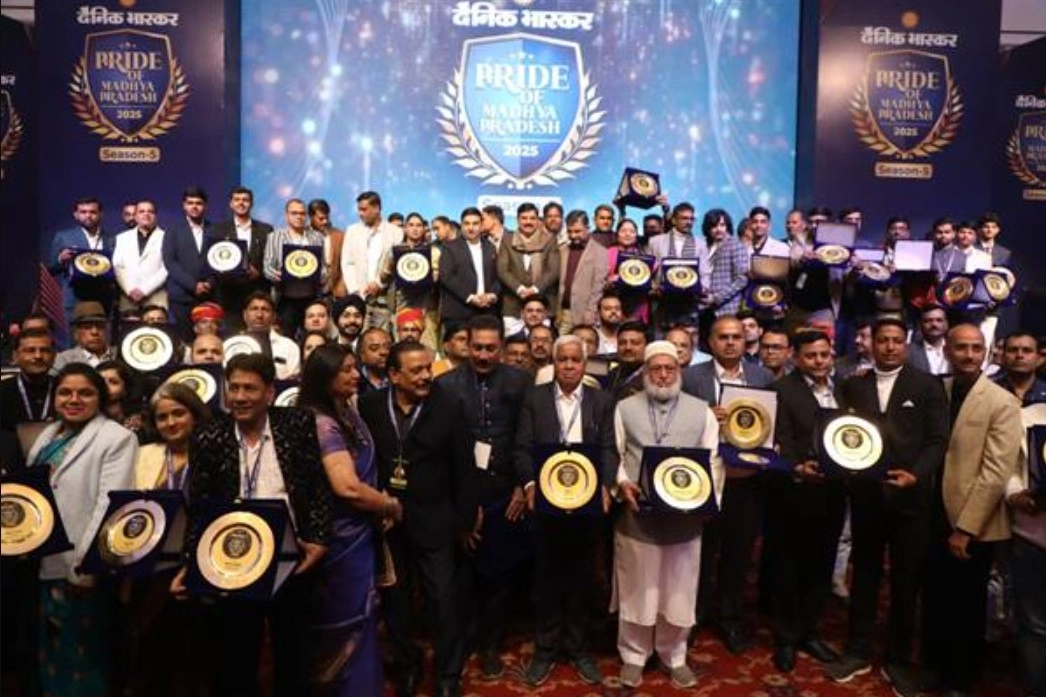1. India now has 1,020 women for every 1000 men 2. India is not getting any younger 3. India no longer faces the threat of a population explosion
NFHS-5: #MadhyaPradesh बच्चों और महिलाओं के पोषण, स्वास्थ्य की स्थिति में उल्लेखनीय सुधार दर्शाता है। #एनीमिया में वृद्धि चिंता का विषय; हाथ में नकदी, महिलाओं के काम में भी आई गिरावट
नेशनल फैमिली एंड हेल्थ सर्वे के मुताबिक मध्यप्रदेश में स्कूल जाने वाली बच्चियों की संख्या बढ़ी है| हालाकि 5 साल में इसमें बहुत ज्यादा इजाफा नहीं हुआ है फिर भी 2015-16 में 64% लड़कियां स्कूल जाती थी अब इनकी तादाद 67% हो गई है|
मध्यप्रदेश में 15 साल से कम उम्र के बच्चों की संख्या 26% रह गई है जबकि 5 साल पहले 30% थी|
मध्यप्रदेश में लड़कों के मुकाबले लड़कियों की संख्या में थोड़ा इजाफा हुआ है| 2015-16 में लड़कियों की संख्या 1000 लडकों पर 948 थी अब लड़कियों की संख्या 1000 लडकों पर 970 पहुंच चुकी है| हालांकि अभी भी लड़कियों की संख्या लड़कों के मुताबिक मुकाबले लगभग 130 प्रति हजार कम है|
मध्यप्रदेश में अभी भी 65 प्रतिशत महिलाएं ही शिक्षित हैं, जबकि पुरुषों की बात करें तो मध्य प्रदेश में 81% पूर्व शिक्षित हैं|
मध्यप्रदेश में अभी भी 23% लड़कियों की शादी 18 साल से कम उम्र में हो जाती है 5 साल पहले यह आंकड़ा 32% था|
मध्यप्रदेश में संस्थागत प्रसव में बढ़ोतरी हुई है| 2015-16 में 80% संस्थागत प्रसव हुआ करते थे अब 90% हो गए हैं|
मध्यप्रदेश में बच्चों का वैक्सीनेशन रेशों भी बड़ा है 2015-16 में 53% था अब 77% हो गया है|
देखें सर्वे रिपोर्ट : मध्यप्रदेश
|
Indicators |
NFHS-5 (2020-21) |
|
NFHS-4 (2015-16) |
|
|
Population and Household Profile |
Urban |
Rural |
Total |
Total |
|
1. Female population age 6 years and above who ever attended school (%) |
80.5 |
62.6 |
67.5 |
64.0 |
|
2. Population below age 15 years (%) |
23.9 |
27.5 |
26.5 |
30.3 |
|
3. Sex ratio of the total population (females per 1,000 males) |
953 |
976 |
970 |
948 |
|
4. Sex ratio at birth for children born in the last five years (females per 1,000 males) |
948 |
959 |
956 |
927 |
|
5. Children under age 5 years whose birth was registered with the civil authority (%) |
95.5 |
93.7 |
94.1 |
81.9 |
|
6. Deaths in the last 3 years registered with the civil authority (%) |
85.1 |
70.5 |
74.3 |
na |
|
7. Population living in households with electricity (%) |
99.4 |
98.0 |
98.4 |
90.9 |
|
8. Population living in households with an improved drinking-water source1 (%) |
97.9 |
85.7 |
89.0 |
85.2 |
|
9. Population living in households that use an improved sanitation facility2 (%) |
81.2 |
59.2 |
65.1 |
34.8 |
|
10. Households using clean fuel for cooking3 (%) |
84.3 |
23.6 |
40.1 |
29.6 |
|
11. Households using iodized salt (%) |
97.5 |
94.4 |
95.3 |
93.2 |
|
12. Households with any usual member covered under a health insurance/financing scheme (%) |
41.4 |
36.8 |
38.1 |
17.7 |
|
13. Children age 5 years who attended pre-primary school during the school year 2019-20 (%) |
15.2 |
9.0 |
10.5 |
na |
|
Characteristics of Adults (age 15-49 years) |
||||
|
14. Women who are literate4 (%) |
81.5 |
59.2 |
65.4 |
na |
|
15. Men who are literate4 (%) |
88.3 |
78.7 |
81.3 |
na |
|
16. Women with 10 or more years of schooling (%) |
49.1 |
21.7 |
29.3 |
23.2 |
|
17. Men with 10 or more years of schooling (%) |
53.1 |
35.0 |
39.9 |
34.3 |
|
18. Women who have ever used the internet (%) |
46.5 |
20.1 |
26.9 |
na |
|
19. Men who have ever used the internet (%) |
72.7 |
49.3 |
55.7 |
na |
|
Marriage and Fertility |
||||
|
20. Women age 20-24 years married before age 18 years (%) |
13.0 |
26.6 |
23.1 |
32.4 |
|
21. Men age 25-29 years married before age 21 years (%) |
15.8 |
35.1 |
30.1 |
31.2 |
|
22. Total fertility rate (children per woman) |
1.6 |
2.1 |
2.0 |
2.3 |
|
23. Women age 15-19 years who were already mothers or pregnant at the time of the survey (%) |
2.5 |
5.9 |
5.1 |
7.3 |
|
24. Adolescent fertility rate for women age 15-19 years5 |
19 |
43 |
37 |
53 |
|
Infant and Child Mortality Rates (per 1,000 live births) |
||||
|
25. Neonatal mortality rate (NNMR) |
24.0 |
30.4 |
29.0 |
36.9 |
|
26. Infant mortality rate (IMR) |
33.9 |
43.5 |
41.3 |
51.2 |
|
27. Under-five mortality rate (U5MR) |
38.2 |
52.5 |
49.2 |
64.6 |
|
Current Use of Family Planning Methods (currently married women age 15–49 years) |
||||
|
28. Any method6 (%) |
71.4 |
71.9 |
71.7 |
51.4 |
|
29. Any modern method6 (%) |
63.8 |
66.1 |
65.5 |
49.6 |
|
30. Female sterilization (%) |
41.5 |
55.7 |
51.9 |
42.2 |
|
31. Male sterilization (%) |
0.8 |
0.7 |
0.7 |
0.5 |
|
32. IUD/PPIUD (%) |
1.4 |
0.9 |
1.1 |
0.5 |
|
33. Pill (%) |
2.6 |
1.7 |
1.9 |
1.3 |
|
34. Condom (%) |
15.8 |
5.3 |
8.1 |
4.9 |
|
35. Injectables (%) |
0.6 |
0.3 |
0.4 |
0.1 |
|
Unmet Need for Family Planning (currently married women age 15–49 years) |
||||
|
36. Total unmet need7 (%) |
8.4 |
7.4 |
7.7 |
12.1 |
|
37. Unmet need for spacing7 (%) |
3.9 |
3.8 |
3.9 |
5.7 |
|
Quality of Family Planning Services |
||||
|
38. Health worker ever talked to female non-users about family planning (%) |
26.9 |
28.7 |
28.2 |
20.4 |
|
39. Current users ever told about side effects of current method8 (%) |
77.2 |
67.9 |
69.9 |
39.3 |
|
Indicators |
NFHS-5 (2020-21) |
|
NFHS-4 (2015-16) |
|
|
Maternal and Child Health |
Urban |
Rural |
Total |
Total |
|
Maternity Care (for last birth in the 5 years before the survey) |
||||
|
40. Mothers who had an antenatal check-up in the first trimester (%) |
78.4 |
74.4 |
75.4 |
53.0 |
|
41. Mothers who had at least 4 antenatal care visits (%) |
63.3 |
55.6 |
57.5 |
35.7 |
|
42. Mothers whose last birth was protected against neonatal tetanus9 (%) |
96.4 |
94.5 |
95.0 |
89.8 |
|
43. Mothers who consumed iron folic acid for 100 days or more when they were pregnant (%) |
58.6 |
49.1 |
51.4 |
23.5 |
|
44. Mothers who consumed iron folic acid for 180 days or more when they were pregnant (%) |
36.6 |
30.3 |
31.8 |
9.2 |
|
45. Registered pregnancies for which the mother received a Mother and Child Protection (MCP) card (%) |
94.5 |
97.4 |
96.7 |
92.2 |
|
46. Mothers who received postnatal care from a doctor/nurse/LHV/ANM/midwife/other health personnel within 2 days of delivery (%) |
87.6 |
82.2 |
83.5 |
54.9 |
|
47. Average out-of-pocket expenditure per delivery in a public health facility (Rs.) |
1,969 |
1,523 |
1,619 |
1,481 |
|
48. Children born at home who were taken to a health facility for a check-up within 24 hours of birth (%) |
11.4 |
9.2 |
9.4 |
2.5 |
|
49. Children who received postnatal care from a doctor/nurse/LHV/ANM/midwife/other health personnel within 2 days of delivery (%) |
89.0 |
82.3 |
83.9 |
na |
|
Delivery Care (for births in the 5 years before the survey) |
||||
|
50. Institutional births (%) |
95.8 |
89.2 |
90.7 |
80.8 |
|
51. Institutional births in public facility (%) |
71.9 |
82.6 |
80.2 |
69.4 |
|
52. Home births that were conducted by skilled health personnel10 (%) |
1.2 |
2.9 |
2.5 |
2.3 |
|
53. Births attended by skilled health personnel10 (%) |
92.5 |
88.4 |
89.3 |
78.0 |
|
54. Births delivered by caesarean section (%) |
23.3 |
8.8 |
12.1 |
8.6 |
|
55. Births in a private health facility that were delivered by caesarean section (%) |
51.4 |
53.2 |
52.3 |
40.8 |
|
56. Births in a public health facility that were delivered by caesarean section (%) |
15.3 |
6.5 |
8.2 |
5.8 |
|
Child Vaccinations and Vitamin A Supplementation |
||||
|
57. Children age 12-23 months fully vaccinated based on information from either vaccination card or mother's recall11 (%) |
76.5 |
77.3 |
77.1 |
53.6 |
|
58. Children age 12-23 months fully vaccinated based on information from vaccination card only12 (%) |
83.5 |
83.2 |
83.3 |
76.3 |
|
59. Children age 12-23 months who have received BCG (%) |
95.3 |
95.4 |
95.4 |
91.6 |
|
60. Children age 12-23 months who have received 3 doses of polio vaccine13 (%) |
81.0 |
81.5 |
81.4 |
63.6 |
|
61. Children age 12-23 months who have received 3 doses of penta or DPT vaccine (%) |
89.3 |
86.9 |
87.4 |
73.4 |
|
62. Children age 12-23 months who have received the first dose of measles-containing vaccine (MCV) (%) |
89.1 |
87.7 |
88.0 |
79.6 |
|
63. Children age 24-35 months who have received a second dose of measles-containing vaccine (MCV) (%) |
32.7 |
35.9 |
35.2 |
na |
|
64. Children age 12-23 months who have received 3 doses of rotavirus vaccine14 (%) |
73.5 |
70.1 |
70.9 |
na |
|
65. Children age 12-23 months who have received 3 doses of penta or hepatitis B vaccine (%) |
86.2 |
84.7 |
85.0 |
56.3 |
|
66. Children age 9-35 months who received a vitamin A dose in the last 6 months (%) |
78.4 |
77.9 |
78.1 |
66.2 |
|
67. Children age 12-23 months who received most of their vaccinations in a public health facility (%) |
95.1 |
99.3 |
98.4 |
95.7 |
|
68. Children age 12-23 months who received most of their vaccinations in a private health facility (%) |
4.4 |
0.3 |
1.2 |
3.7 |
|
Treatment of Childhood Diseases (children under age 5 years) |
||||
|
69. Prevalence of diarrhoea in the 2 weeks preceding the survey (%) |
7.2 |
6.2 |
6.4 |
9.5 |
|
70. Children with diarrhoea in the 2 weeks preceding the survey who received oral rehydration salts (ORS) (%) |
67.6 |
64.4 |
65.2 |
55.2 |
|
71. Children with diarrhoea in the 2 weeks preceding the survey who received zinc (%) |
36.9 |
35.1 |
35.6 |
26.6 |
|
72. Children with diarrhoea in the 2 weeks preceding the survey taken to a health facility or health provider (%) |
68.6 |
64.6 |
65.6 |
68.2 |
|
73. Prevalence of symptoms of acute respiratory infection (ARI) in the 2 weeks preceding the survey (%) |
3.2 |
2.5 |
2.6 |
2.1 |
|
74. Children with fever or symptoms of ARI in the 2 weeks preceding the survey taken to a health facility or health provider (%) |
69.6 |
62.4 |
64.3 |
70.9 |
|
Indicators |
NFHS-5 (2020-21) |
|
NFHS-4 (2015-16) |
|
|
Child Feeding Practices and Nutritional Status of Children |
Urban |
Rural |
Total |
Total |
|
75. Children under age 3 years breastfed within one hour of birth15 (%) |
36.2 |
42.8 |
41.3 |
34.4 |
|
76. Children under age 6 months exclusively breastfed16 (%) |
68.8 |
75.2 |
74.0 |
58.2 |
|
77. Children age 6-8 months receiving solid or semi-solid food and breastmilk16 (%) |
42.7 |
38.5 |
39.5 |
38.1 |
|
78. Breastfeeding children age 6-23 months receiving an adequate diet16, 17 (%) |
11.2 |
8.9 |
9.4 |
6.9 |
|
79. Non-breastfeeding children age 6-23 months receiving an adequate diet16, 17 (%) |
7.7 |
7.6 |
7.7 |
4.9 |
|
80. Total children age 6-23 months receiving an adequate diet16, 17 (%) |
10.6 |
8.7 |
9.2 |
6.6 |
|
81. Children under 5 years who are stunted (height-for-age)18 (%) |
30.1 |
37.3 |
35.7 |
42.0 |
|
82. Children under 5 years who are wasted (weight-for-height)18 (%) |
19.9 |
18.7 |
19.0 |
25.8 |
|
83. Children under 5 years who are severely wasted (weight-for-height)19 (%) |
7.0 |
6.3 |
6.5 |
9.2 |
|
84. Children under 5 years who are underweight (weight-for-age)18 (%) |
28.6 |
34.2 |
33.0 |
42.8 |
|
85. Children under 5 years who are overweight (weight-for-height)20 (%) |
1.8 |
2.1 |
2.0 |
1.7 |
|
Nutritional Status of Adults (age 15-49 years) |
||||
|
86. Women whose Body Mass Index (BMI) is below normal (BMI <18.5 kg/m2)21 (%) |
17.1 |
25.2 |
23.0 |
28.4 |
|
87. Men whose Body Mass Index (BMI) is below normal (BMI <18.5 kg/m2) (%) |
17.7 |
21.8 |
20.8 |
28.4 |
|
88. Women who are overweight or obese (BMI ≥25.0 kg/m2)21 (%) |
26.0 |
13.0 |
16.6 |
13.6 |
|
89. Men who are overweight or obese (BMI ≥25.0 kg/m2) (%) |
25.7 |
12.1 |
15.6 |
10.9 |
|
90. Women who have high risk waist-to-hip ratio (≥0.85) (%) |
42.0 |
39.9 |
40.5 |
na |
|
91. Men who have high risk waist-to-hip ratio (≥0.90) (%) |
39.8 |
38.8 |
39.1 |
na |
|
Anaemia among Children and Adults |
||||
|
92. Children age 6-59 months who are anaemic (<11.0 g/dl)22 (%) |
72.5 |
72.7 |
72.7 |
68.9 |
|
93. Non-pregnant women age 15-49 years who are anaemic (<12.0 g/dl)22 (%) |
51.7 |
55.9 |
54.7 |
52.4 |
|
94. Pregnant women age 15-49 years who are anaemic (<11.0 g/dl)22 (%) |
45.1 |
54.9 |
52.9 |
54.6 |
|
95. All women age 15-49 years who are anaemic22 (%) |
51.5 |
55.8 |
54.7 |
52.5 |
|
96. All women age 15-19 years who are anaemic22 (%) |
57.4 |
58.3 |
58.1 |
53.2 |
|
97. Men age 15-49 years who are anaemic (<13.0 g/dl)22 (%) |
21.0 |
22.9 |
22.4 |
25.5 |
|
98. Men age 15-19 years who are anaemic (<13.0 g/dl)22 (%) |
31.0 |
30.3 |
30.5 |
36.5 |
|
Blood Sugar Level among Adults (age 15 years and above) |
||||
|
Women |
||||
|
99. Blood sugar level - high (141-160 mg/dl)23 (%) |
5.4 |
5.2 |
5.3 |
na |
|
100. Blood sugar level - very high (>160 mg/dl)23 (%) |
4.9 |
3.6 |
3.9 |
na |
|
101. Blood sugar level - high or very high (>140 mg/dl) or taking medicine to control blood sugar level23 (%) |
11.2 |
9.4 |
9.8 |
na |
|
Men |
||||
|
102. Blood sugar level - high (141-160 mg/dl)23 (%) |
6.2 |
6.7 |
6.6 |
na |
|
103. Blood sugar level - very high (>160 mg/dl)23 (%) |
5.9 |
4.6 |
4.9 |
na |
|
104. Blood sugar level - high or very high (>140 mg/dl) or taking medicine to control blood sugar level23 (%) |
13.1 |
11.9 |
12.2 |
na |
|
Hypertension among Adults (age 15 years and above) |
||||
|
Women |
||||
|
105. Mildly elevated blood pressure (Systolic 140-159 mm of Hg and/or Diastolic 90-99 mm of Hg) (%) |
13.9 |
12.9 |
13.2 |
na |
|
106. Moderately or severely elevated blood pressure (Systolic ≥160 mm of Hg and/or Diastolic ≥100 mm of Hg) (%) |
5.2 |
5.2 |
5.2 |
na |
|
107. Elevated blood pressure (Systolic ≥140 mm of Hg and/or Diastolic ≥90 mm of Hg) or taking medicine to control blood pressure (%) |
22.5 |
19.9 |
20.6 |
na |
|
Men |
||||
|
108. Mildly elevated blood pressure (Systolic 140-159 mm of Hg and/or Diastolic 90-99 mm of Hg) (%) |
17.9 |
15.3 |
16.0 |
na |
|
109. Moderately or severely elevated blood pressure (Systolic ≥160 mm of Hg and/or Diastolic ≥100 mm of Hg) (%) |
5.9 |
5.1 |
5.3 |
na |
|
110. Elevated blood pressure (Systolic ≥140 mm of Hg and/or Diastolic ≥90 mm of Hg) or taking medicine to control blood pressure (%) |
25.9 |
21.5 |
22.7 |
na |
|
Indicators |
NFHS-5 (2020-21) |
NFHS-4 (2015-16) |
||
|
Screening for Cancer among Adults (age 30-49 years) |
Urban |
Rural |
Total |
Total |
|
Women |
||||
|
111. Ever undergone a screening test for cervical cancer (%) |
1.1 |
0.7 |
0.8 |
na |
|
112. Ever undergone a breast examination for breast cancer (%) |
0.8 |
0.4 |
0.5 |
na |
|
113. Ever undergone an oral cavity examination for oral cancer (%) |
0.9 |
0.6 |
0.7 |
na |
|
Men |
||||
|
114. Ever undergone an oral cavity examination for oral cancer (%) |
0.9 |
0.8 |
0.9 |
na |
|
Knowledge of HIV/AIDS among Adults (age 15-49 years) |
||||
|
115. Women who have comprehensive knowledge24 of HIV/AIDS (%) |
26.7 |
16.0 |
18.7 |
18.1 |
|
116. Men who have comprehensive knowledge24 of HIV/AIDS (%) |
29.7 |
25.0 |
26.3 |
29.3 |
|
117. Women who know that consistent condom use can reduce the chance of getting HIV/AIDS (%) |
75.3 |
61.5 |
65.1 |
46.8 |
|
118. Men who know that consistent condom use can reduce the chance of getting HIV/AIDS (%) |
84.2 |
76.4 |
78.5 |
70.1 |
|
Women's Empowerment (women age 15-49 years) |
||||
|
119. Currently married women who usually participate in three household decisions25 (%) |
91.7 |
84.1 |
86.0 |
82.8 |
|
120. Women who worked in the last 12 months and were paid in cash (%) |
23.2 |
28.0 |
26.8 |
29.9 |
|
121. Women owning a house and/or land (alone or jointly with others) (%) |
35.8 |
41.3 |
39.9 |
43.5 |
|
122. Women having a bank or savings account that they themselves use (%) |
78.5 |
73.3 |
74.7 |
37.3 |
|
123. Women having a mobile phone that they themselves use (%) |
58.8 |
31.4 |
38.5 |
28.7 |
|
124. Women age 15-24 years who use hygienic methods of protection during their menstrual period26 (%) |
81.9 |
53.4 |
60.5 |
37.6 |
|
Gender Based Violence (age 18-49 years) |
||||
|
125. Ever-married women age 18-49 years who have ever experienced spousal violence27 (%) |
26.4 |
28.7 |
28.1 |
33.0 |
|
126. Ever-married women age 18-49 years who have experienced physical violence during any pregnancy (%) |
2.8 |
2.1 |
2.3 |
3.3 |
|
127. Young women age 18-29 years who experienced sexual violence by age 18 (%) |
0.5 |
1.2 |
1.0 |
1.9 |
|
Tobacco Use and Alcohol Consumption among Adults (age 15 years and above) |
||||
|
128. Women age 15 years and above who use any kind of tobacco (%) |
6.5 |
11.6 |
10.2 |
na |
|
129. Men age 15 years and above who use any kind of tobacco (%) |
35.3 |
50.8 |
46.5 |
na |
|
130. Women age 15 years and above who consume alcohol (%) |
0.5 |
1.2 |
1.0 |
na |
|
131. Men age 15 years and above who consume alcohol (%) |
13.2 |
18.6 |
17.1 |
na |
Introduction
The National Family Health Survey 2020-21 (NFHS-5), the fifth in the NFHS series, provides information on population, health, and nutrition for India and each state/union territory (UT). Like NFHS-4, NFHS-5 also provides district-level estimates for many important indicators.
The contents of NFHS-5 are similar to NFHS-4 to allow comparisons over time. However, NFHS-5 includes some new topics, such as preschool education, disability, access to a toilet facility, death registration, bathing practices during menstruation, and methods and reasons for abortion. The scope of clinical, anthropometric, and biochemical testing (CAB) has also been expanded to include measurement of waist and hip circumferences, and the age range for the measurement of blood pressure and blood glucose has been expanded. However, HIV testing has been dropped. The NFHS-5 sample has been designed to provide national, state/union territory (UT), and district level estimates of various indicators covered in the survey. However, estimates of indicators of sexual behaviour; husband’s background and woman’s work; HIV/AIDS knowledge, attitudes and behaviour; and domestic violence are available only at the state/union territory (UT) and national level.
As in the earlier rounds, the Ministry of Health and Family Welfare, Government of India, designated the International Institute for Population Sciences, Mumbai, as the nodal agency to conduct NFHS-5. The main objective of each successive round of the NFHS has been to provide high-quality data on health and family welfare and emerging issues in this area. NFHS-5 data will be useful in setting benchmarks and examining the progress the health sector has made over time. Besides providing evidence for the effectiveness of ongoing programmes, the data from NFHS-5 help in identifying the need for new programmes with an area specific focus and identifying groups that are most in need of essential services.
Four Survey Schedules - Household, Woman’s, Man’s, and Biomarker - were canvassed in local languages using Computer Assisted Personal Interviewing (CAPI). In the Household Schedule, information was collected on all usual members of the household and visitors who stayed in the household the previous night, as well as socio-economic characteristics of the household; water, sanitation, and hygiene; health insurance coverage; disabilities; land ownership; number of deaths in the household in the three years preceding the survey; and the ownership and use of mosquito nets. The Woman’s Schedule covered a wide variety of topics, including the woman’s characteristics, marriage, fertility, contraception, children’s immunizations and healthcare, nutrition, reproductive health, sexual behaviour, HIV/AIDS, women’s empowerment, and domestic violence. The Man’s Schedule covered the man’s characteristics, marriage, his number of children, contraception, fertility preferences, nutrition, sexual behaviour, health issues, attitudes towards gender roles, and HIV/AIDS. The Biomarker Schedule covered measurements of height, weight, and haemoglobin levels for children; measurements of height, weight, waist and hip circumference, and haemoglobin levels for women age 15-49 years and men age 15-54 years; and blood pressure and random blood glucose levels for women and men age 15 years and over. In addition, women and men were requested to provide a few additional drops of blood from a finger prick for laboratory testing for HbA1c, malaria parasites, and Vitamin D3.
Readers should be cautious while interpreting and comparing the trends as some States/UTs may have smaller sample size. Moreover, at the time of survey, Ayushman Bharat AB-PMJAY and Pradhan Mantri Surakshit Matritva Abhiyan (PMSMA) were not fully rolled out and hence, their coverage may not have been factored in the results of indicator 12 (percentage of households with any usual member covered under a health insurance/financing scheme) and indicator 41 (percentage of mothers who received 4 or more antenatal care check-ups).
This fact sheet provides information on key indicators and trends for Madhya Pradesh. Due to the Covid-19 situation and the imposition of lockdown, NFHS-5 fieldwork in phase 2 States/UTs was conducted in two parts. NFHS-5 fieldwork for Madhya Pradesh was conducted from 6th January 2020 to 21st March 2020 prior to the lockdown and from 28th November 2020 to 30th April 2021 post lockdown by Development and Research Services Pvt. Ltd. (DRS) and Indian Institute of Development Management (IIDM). Information was gathered from 43,552 households, 48,410 women, and 7,025 men. Fact sheets for each district in Madhya Pradesh are also available separately.



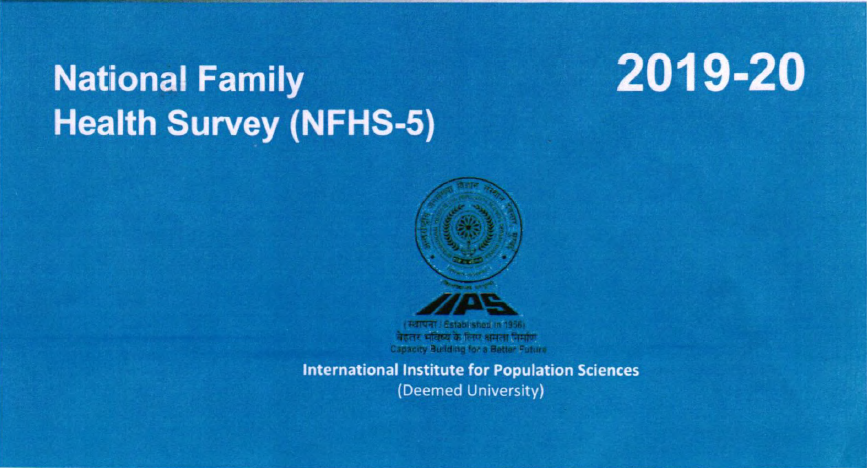
 पुराण डेस्क
पुराण डेस्क 
